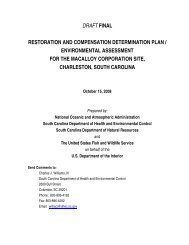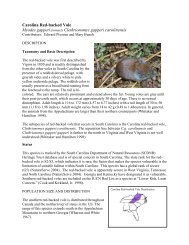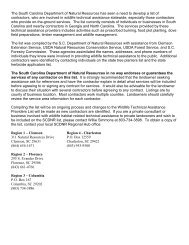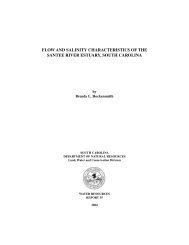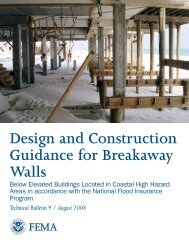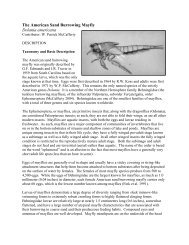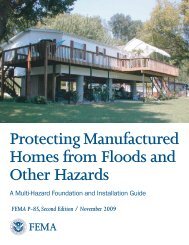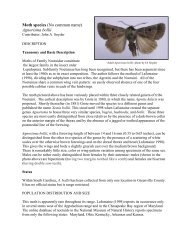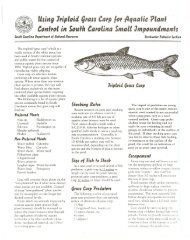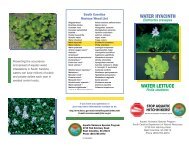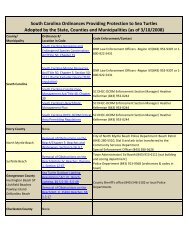Marsh Periwinkle Littoraria irrorata - South Carolina Department of ...
Marsh Periwinkle Littoraria irrorata - South Carolina Department of ...
Marsh Periwinkle Littoraria irrorata - South Carolina Department of ...
You also want an ePaper? Increase the reach of your titles
YUMPU automatically turns print PDFs into web optimized ePapers that Google loves.
meter). Snails are also commonly found above the high water line on the stems <strong>of</strong> marsh plants;<br />
evidence suggests this climbing behavior is in response to blue crab predators (Hamilton 1976;<br />
Vaughn and Fisher 1992). <strong>Marsh</strong> periwinkles feed on microalgae and detritus; they may also<br />
garden and consume fungal decomposers found on the surface <strong>of</strong> marsh plants (Silliman and<br />
Newell 2003).<br />
CHALLENGES<br />
Major challenges to conservation <strong>of</strong> the salt marsh periwinkle include the loss <strong>of</strong> habitat and<br />
dramatic alterations to predator populations. Recently, marsh periwinkle has been implicated as<br />
a critical consumer <strong>of</strong> cordgrass and increased snail densities may responsible for observed<br />
declines in intertidal cordgrass coverage (Silliman and Bertness 2002). Increased marsh<br />
periwinkle densities are attributed to reductions in a major predator, the blue crab, Calinectes<br />
sapidus (Silliman and Bertness 2002). Reductions in marsh acreage or quality will also affect<br />
snail foraging and survival. Snails appear to have an obligatory relationship with cordgrass and<br />
the loss <strong>of</strong> cordgrass habitat would suggest a negative effect on snail populations. However,<br />
snails also appear to have a reciprocal negative effect on cordgrass in the absence <strong>of</strong> “natural<br />
densities” <strong>of</strong> predators. The cause <strong>of</strong> what appears to be an out <strong>of</strong> balance predator/prey dynamic<br />
between blue crabs and marsh periwinkle needs to be determined.<br />
CONSERVATION ACCOMPLISHMENTS<br />
The marsh periwinkle has received little or no attention in terms <strong>of</strong> past conservation efforts,<br />
likely in part because <strong>of</strong> the species ubiquitous distribution within coastal salt marshes.<br />
CONSERVATION RECOMMENDATIONS<br />
• Further investigate the theory <strong>of</strong> top-down regulation <strong>of</strong> cordgrass biomass by marsh<br />
periwinkle.<br />
• Determine whether blue crab predation is capable <strong>of</strong> regulating the distribution and<br />
abundance <strong>of</strong> periwinkles.<br />
• Determine the preferred food(s) <strong>of</strong> marsh periwinkles.<br />
• Determine whether recruitment is responsible for the initial distribution and abundance <strong>of</strong><br />
marsh periwinkle in the marsh.<br />
• Determine dispersing capabilities <strong>of</strong> marsh periwinkle.<br />
• Determine whether cordgrass characteristics and/or environmental conditions determine<br />
snail consumption.<br />
• Determine the fraction <strong>of</strong> the overall productivity <strong>of</strong> a marsh that is processed by snails.<br />
• Determine the role <strong>of</strong> marsh periwinkle in observed declines <strong>of</strong> cordgrass.<br />
• Determine factors other than predation and cordgrass quality that may account for the<br />
patchy distribution <strong>of</strong> marsh periwinkle in the field.<br />
2



